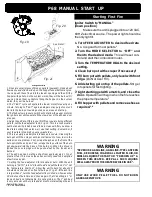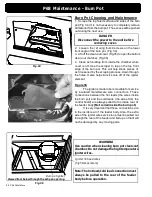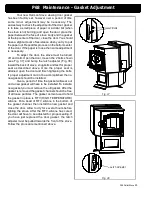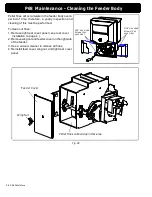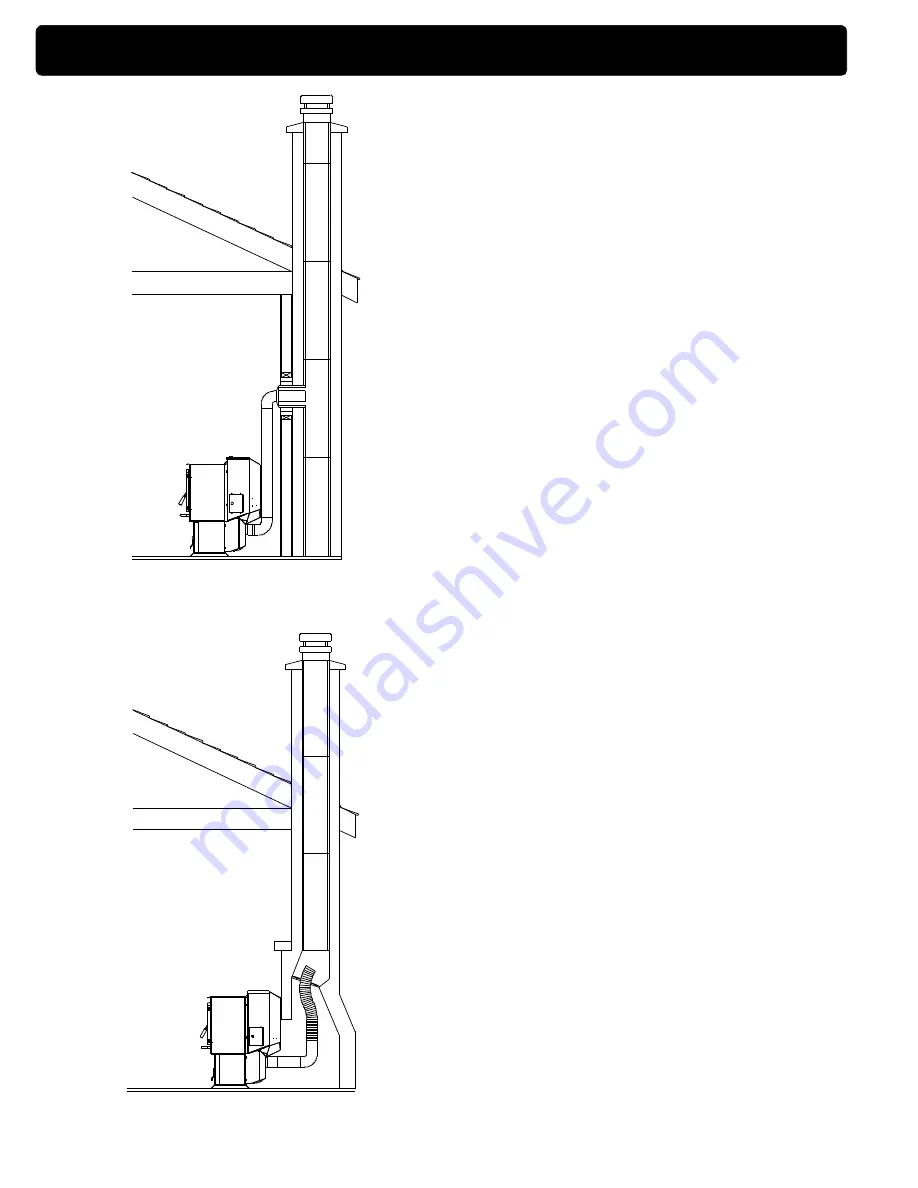
11
P68 Pellet Stove
#4 Installing into an existing
chimney ( US only )
This method provides excellent venting for nor-
mal operation. This method also provides natural
draft in the event of a power failure. If the chimney
condition is questionable* you may want to install a
liner as in method #7.
*The chimney should be inspected and cleaned
before installing your stove. If you discover that the
chimney does not have a clay tile liner or has cracks
or flaking of the tile liner you will need to install a
stainless steel liner within the chimney. In most
cases the inside diameter of this liner should be 4".
Either flexible or rigid liner may be used for this
purpose. Refer to Method 6 & 7.
Be sure to design the venting so that it can be easily
cleaned.
#5 Installing into an existing
fireplace chimney ( US only )
This method provides excellent venting for nor-
mal operation. This method also provides natural
draft in the event of a power failure. If the chimney
condition is questionable* you may want to install a
liner as in method #6.
*The chimney should be inspected and cleaned
before installing your stove. If you discover that the
chimney does not have a clay tile liner or has cracks
or flaking of the tile liner you will need to install a
stainless steel liner within the chimney. In most
cases the inside diameter of this liner should be 4".
Either flexible or rigid liner may be used for this
purpose. Refer to Fig. 6 & 7.
The chimney should be sealed at the damper
using a steel plate, or with insulation at the first flue
tile. In both cases the connector pipe should extend
through the smoke chamber to the base or into the
first flue tile.
Be sure to design the venting so that it can be
easily cleaned.
Fig. 10
Fig. 11
Venting
Evaluation notes were added to the output document. To get rid of these notes, please order your copy of ePrint IV now.


















